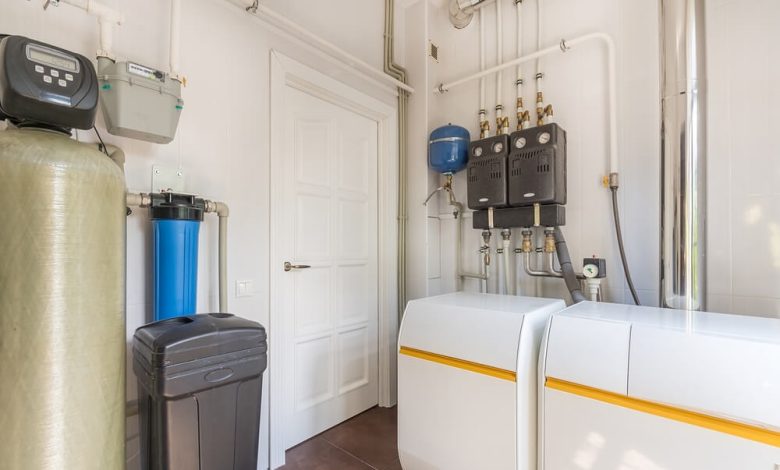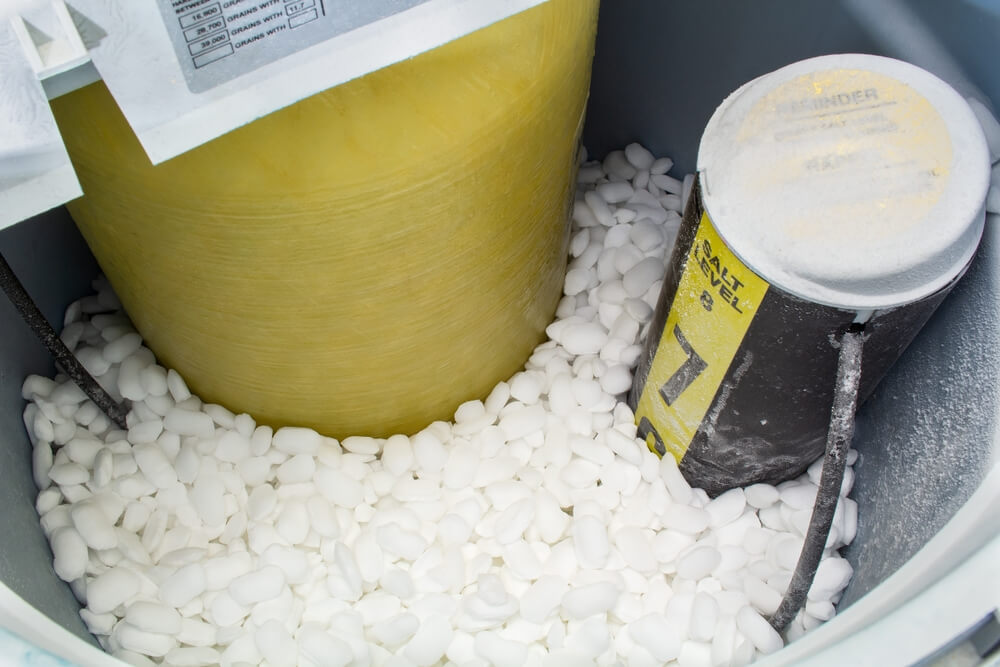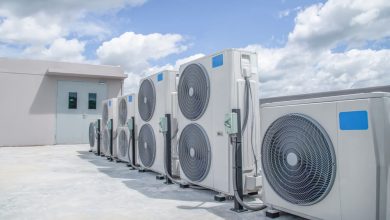What is a Water Softener and How Does it Work

A water softener is a device designed to address the issues caused by hard water in your home. Hard water contains high levels of minerals, specifically calcium and magnesium, which can lead to various problems such as scale buildup in pipes, reduced efficiency of appliances, and even dry skin and hair. The primary function of a water softening system is to remove these minerals from the water supply.
Water softeners work through a process called ion exchange. In this process, hard water passes through a tank filled with resin beads that are coated with sodium ions. As the hard water flows over these beads, the calcium and magnesium ions are exchanged for sodium ions, effectively “softening” the water.
The benefits of using a water softener are numerous. First and foremost, it provides an effective hard water solution that extends the lifespan of your plumbing and household appliances by preventing scale buildup. Additionally, softened water can improve the effectiveness of soaps and detergents, leading to cleaner dishes and laundry while also reducing soap scum in bathrooms and kitchens.
Understanding what a water softener is can help you make an informed decision about whether installing one would be beneficial for your home. By addressing hard water issues at their source, you can enjoy softer skin and hair along with more efficient household systems.
The Science Behind Hard Water and the Need for Water Softeners
Hard water is a common issue faced by many households, characterized by the presence of high levels of minerals, primarily calcium and magnesium. These hard water minerals can cause various problems in daily life, from scaling in pipes and appliances to reducing the effectiveness of soap and detergent.
The science behind hard water lies in its mineral content. When rainwater falls, it is naturally soft. However, as it travels through the ground, it dissolves calcium and magnesium from rocks and soil, becoming “hard.” The higher the concentration of these minerals, the harder the water becomes.
The effects of hard water can be seen in multiple areas around your home. For instance, you may notice white or greyish deposits on faucets and showerheads. These are mineral deposits left behind as hard water evaporates. Over time, these deposits can clog pipes and reduce the efficiency of appliances like dishwashers and washing machines. Moreover, hard water can leave your skin feeling dry and your hair looking dull due to its interaction with soap.
This is where water softeners come into play. Water softeners work by exchanging calcium and magnesium ions with sodium or potassium ions through a process called ion exchange. By softening the water, you not only extend the lifespan of your plumbing system but also improve soap efficiency for cleaner clothes and dishes while maintaining healthier skin and hair.
How a Water Softener Works (The Ion Exchange Process Explained)

A water softener is a device designed to reduce the hardness of water by removing minerals such as calcium and magnesium. The primary mechanism through which this occurs is known as the ion exchange process. Understanding how a water softener works can help homeowners make informed decisions about their water treatment needs.
The ion exchange process begins when hard water enters the softener tank, which contains thousands of tiny resin beads. These beads are typically made from polystyrene and are charged with sodium ions. As hard water flows through the tank, the calcium and magnesium ions in the water are attracted to these resin beads due to their opposite charges.
When these hard minerals come into contact with the resin beads, an exchange takes place: the calcium and magnesium ions are captured by the resin, while sodium ions are released into the water. This substitution effectively removes hardness from the water, leaving it “softened” as it exits the tank.
Over time, however, the resin beads become saturated with calcium and magnesium ions and lose their effectiveness. To regenerate their softening capacity, a brine solution containing high concentrations of sodium is flushed through the system. This brine solution forces out all of the accumulated calcium and magnesium ions from the resin beads and replaces them with fresh sodium ions.
A water softener operates on a simple yet effective principle: using an ion exchange process facilitated by resin beads charged with sodium ions to remove hardness-causing minerals from your household’s water supply. By understanding how does a water softener work, you can appreciate its role in providing softer, more manageable water for everyday use.
Main Components of a Water Softening System
A water softening system is a crucial household appliance designed to tackle hard water problems by removing minerals like calcium and magnesium. Understanding the main components of a water softening system can help users maintain and troubleshoot their units effectively.
The first key component is the brine tank. The brine tank’s function is to hold a salt solution, which is essential for regenerating the resin beads in the resin tank. This regeneration process helps in maintaining the effectiveness of the water softener by flushing out accumulated hardness minerals.
Next, we have the resin tank, which serves a critical purpose in the softening process. The resin tank contains small polystyrene beads known as resin or zeolite, which are charged with sodium ions. As hard water passes through this tank, calcium and magnesium ions are exchanged with sodium ions, effectively softening the water.
Another vital part of a water softener system is the control valve. The control valve operation regulates both the flow of water through the system and initiates regeneration cycles when necessary. Modern control valves are often programmable, allowing users to set specific times for regeneration based on their household’s usage patterns.
Types of Water Softeners (Which One is Right for You?)
When it comes to choosing the right water softener, understanding the different types available can be crucial. The most common options include salt-based softeners, salt-free softeners, dual-tank systems, and magnetic descalers. Each type has its own set of advantages and drawbacks.
Salt-Based vs Salt-Free Softeners
Salt-based water softeners are the traditional choice for many households. They work by using ion exchange to remove calcium and magnesium ions from hard water, replacing them with sodium ions. This method effectively reduces scale buildup and extends the lifespan of your plumbing and appliances.
On the other hand, salt-free softeners do not remove minerals but instead condition them to prevent scale formation. These systems use a process called Template Assisted Crystallization (TAC) to convert hardness minerals into microscopic crystals that remain suspended in water rather than adhering to surfaces. While they may not be as effective as their salt-based counterparts in extremely hard water areas, they offer a maintenance-free and eco-friendly alternative.
Dual-Tank Systems
For households with high water usage or those that require a constant supply of softened water, dual-tank systems can be an excellent choice. These systems feature two resin tanks that operate alternately; when one tank is regenerating, the other continues to soften your water. This ensures an uninterrupted supply of softened water even during peak usage times.
Magnetic Descalers
Magnetic descalers represent another alternative for dealing with hard water issues. These devices attach externally to your home’s main water pipe and use magnetic fields to alter the properties of hardness minerals so they do not form scale deposits. While easy to install and maintain, their effectiveness can vary based on factors like mineral content and flow rate.
Selecting the right type of water softener depends on your specific needs and circumstances—whether you prioritize low maintenance with a salt-free system or require continuous operation with a dual-tank setup. By weighing these options carefully, you can make an informed decision that best suits your household’s requirements.
The Benefits of Using a Water Softener in Your Home
A water softener can be a valuable addition to any home, offering numerous benefits that enhance both daily living and long-term investment in household appliances. One of the primary advantages of softened water is its ability to extend the lifespan of appliances. Hard water contains high levels of minerals like calcium and magnesium, which can accumulate in appliances such as dishwashers, washing machines, and water heaters. Over time, this buildup leads to inefficiency and eventual breakdowns. By using a water softener, you reduce these mineral deposits, ensuring your appliances run smoothly and last longer.
Another significant benefit is the improved health of your skin and hair. Hard water can leave residues that make skin feel dry and irritated while making hair look dull and lifeless. Softened water helps in thoroughly rinsing away soap and shampoo, leaving your skin feeling smoother and your hair shinier. This improvement in personal care routines not only enhances comfort but also reduces the need for additional skincare products.
Incorporating a water softener into your home offers clear advantages by extending the lifespan of household appliances and promoting better skin and hair health benefits. These improvements contribute to both economic savings and enhanced quality of life for you and your family.
Troubleshooting Common Issues with Water Softeners
Water softeners are essential for households dealing with hard water, but like any appliance, they can encounter problems. Understanding how to troubleshoot common issues can save you time and money. Here are some frequent water softener problems and solutions:
Fixing Salt Bridges
One of the most common issues with water softeners is the formation of salt bridges. A salt bridge is a hard crust that forms in the brine tank, preventing the salt from dissolving in water to create brine. This issue can lead to your system not regenerating properly.
To fix a salt bridge:
- Turn off your water softener.
- Use a broom handle or similar tool to gently break up the crust.
- Remove any remaining chunks manually.
- Restart your system and check if it operates correctly.
Low Pressure Issues
Another frequent problem is low water pressure, which can be caused by various factors such as clogged filters or resin beads that need replacement.
To address low pressure:
- Check and clean the pre-filter if your system has one.
- Inspect the resin tank for clogs or damage.
- Replace worn-out resin beads if necessary.
Maintenance Tips
Regular maintenance can prevent many issues before they start:
- Check Salt Levels: Ensure that there is always enough salt in the brine tank but avoid overfilling it.
- Clean Components: Periodically clean the brine tank and other components to prevent buildup.
- Inspect for Leaks: Regularly check hoses and connections for leaks or signs of wear.
By following these troubleshooting steps and maintenance tips, you can ensure that your water softener continues to function efficiently, providing your home with softened water free from minerals that cause scale buildup and other issues.
Invest in a Quality Water Softener for Better Water Today
Investing in a quality water softener can significantly improve the quality of water in your home. Hard water, which contains high levels of calcium and magnesium, can lead to various problems such as scale buildup in pipes and appliances, dry skin, and dull hair. A good water softener effectively removes these minerals, providing you with softer water that is better for both your health and your household.
By installing a reliable water softener, you can extend the lifespan of your plumbing system and home appliances like dishwashers and washing machines. Moreover, it reduces the amount of soap and detergent needed for cleaning tasks, leading to cost savings over time. Softened water also enhances the efficiency of heating systems by preventing scale deposits that hinder heat transfer.
Investing in a high-quality water softener is not just about improving the taste or feel of your water; it’s about safeguarding your home infrastructure and enhancing overall well-being. Make the smart choice today for better water tomorrow.




